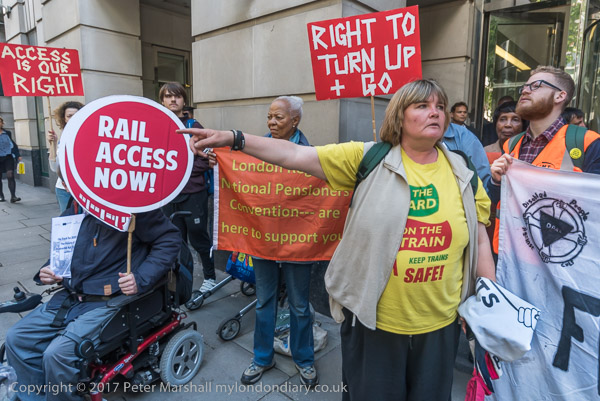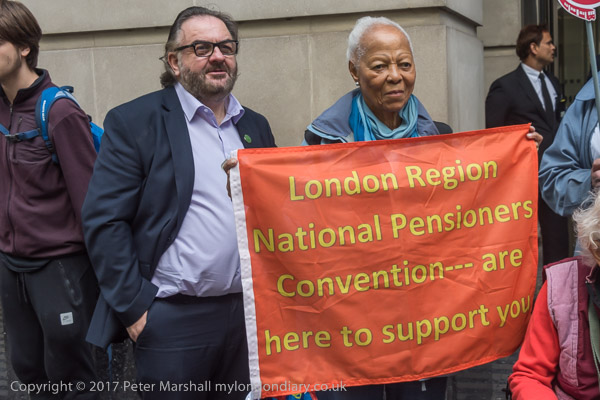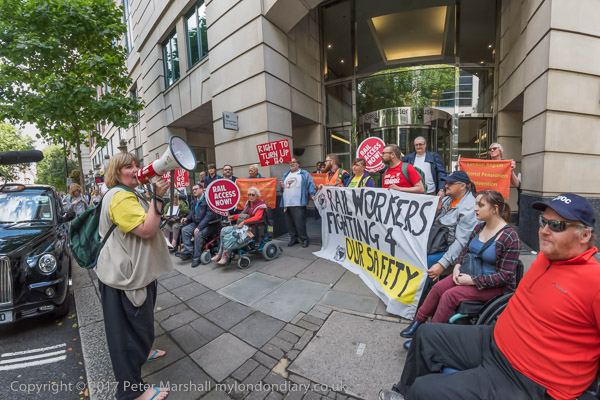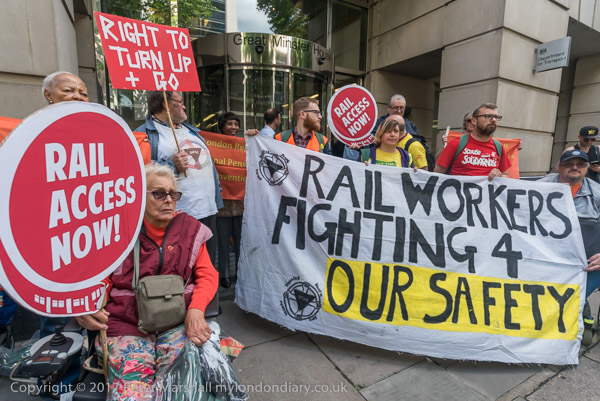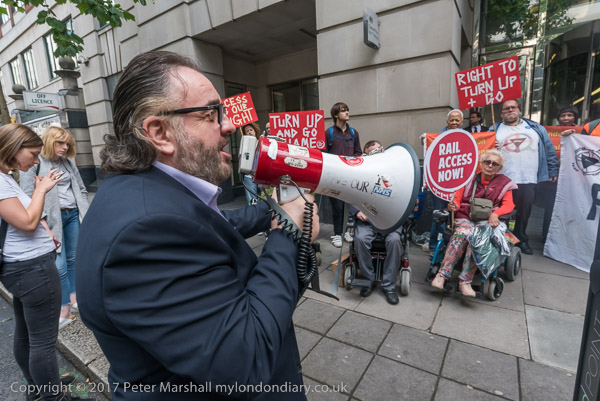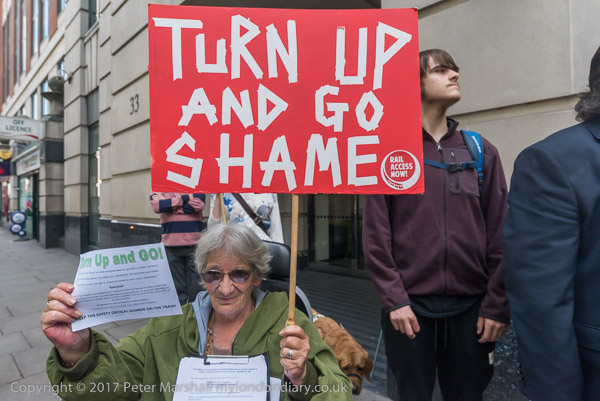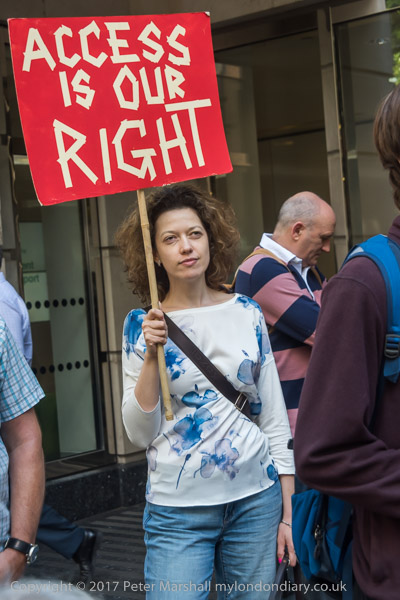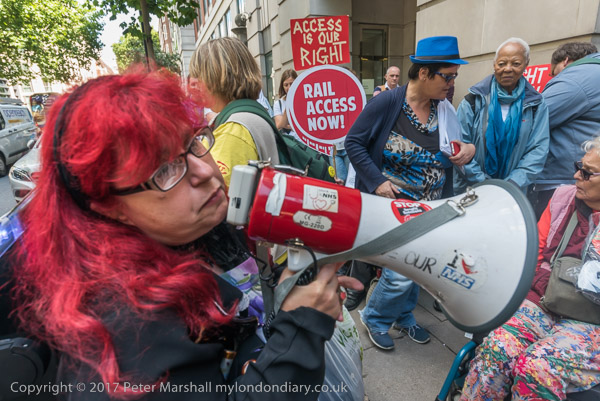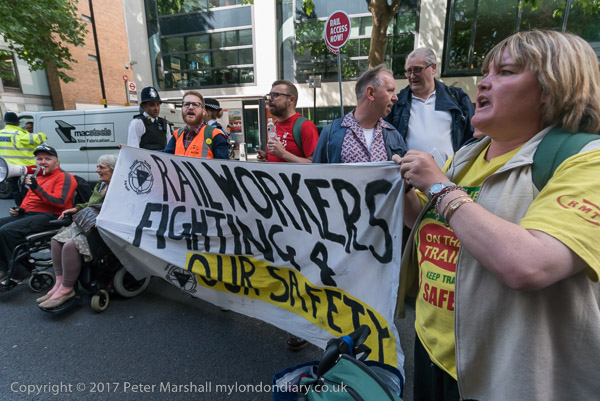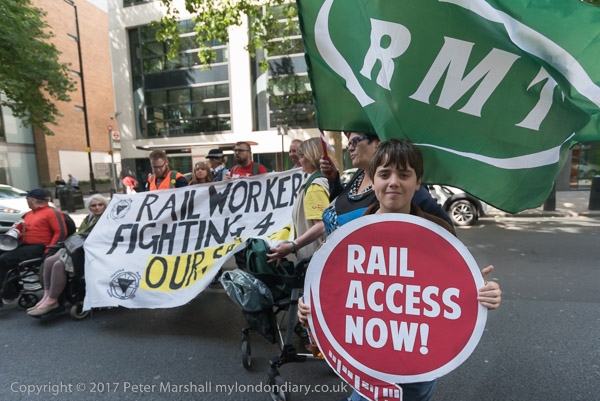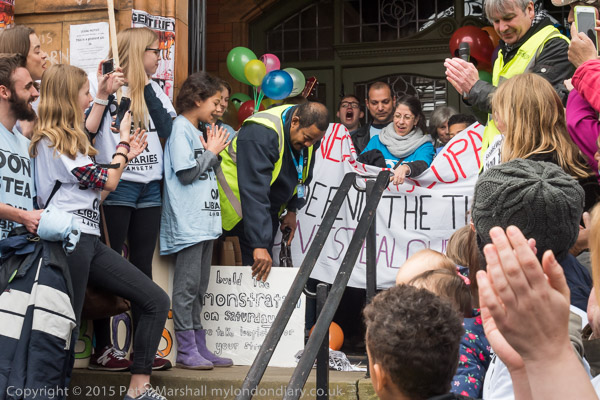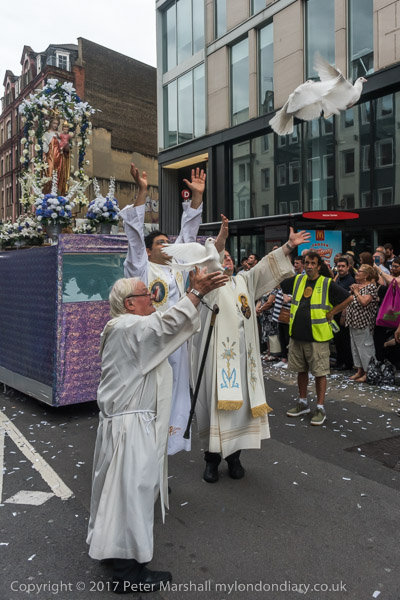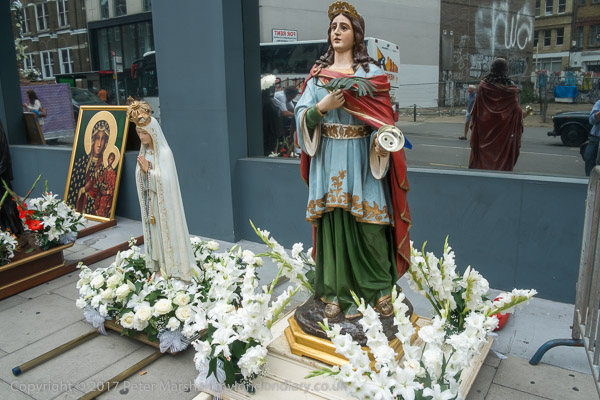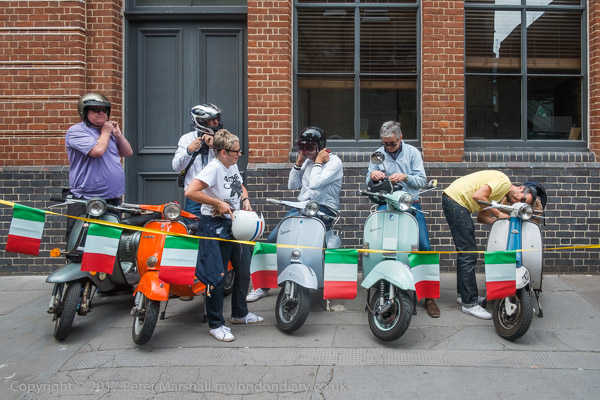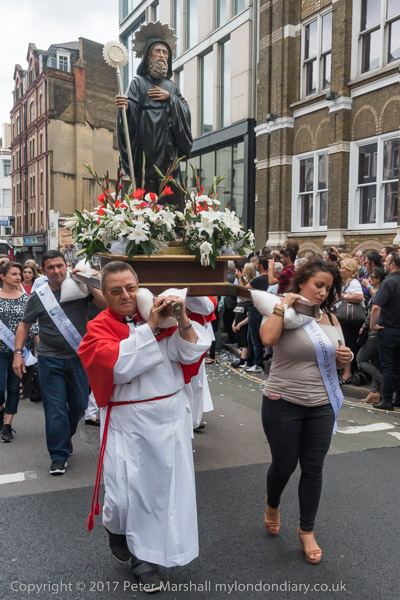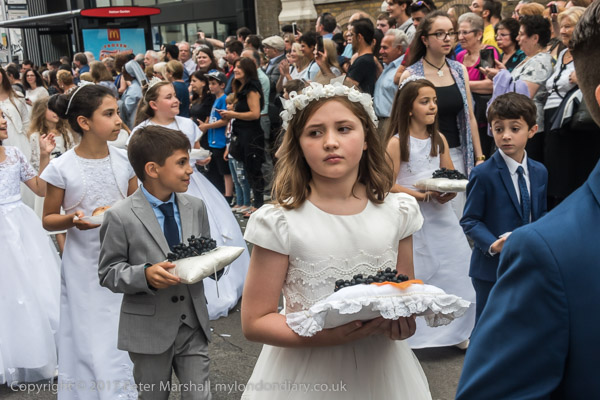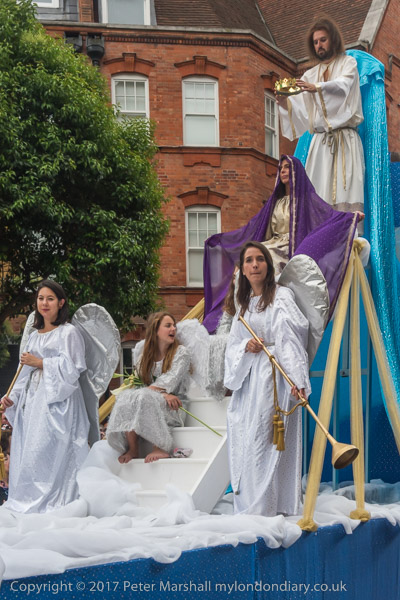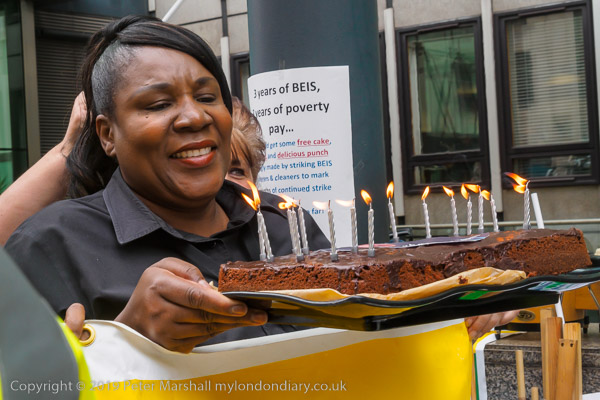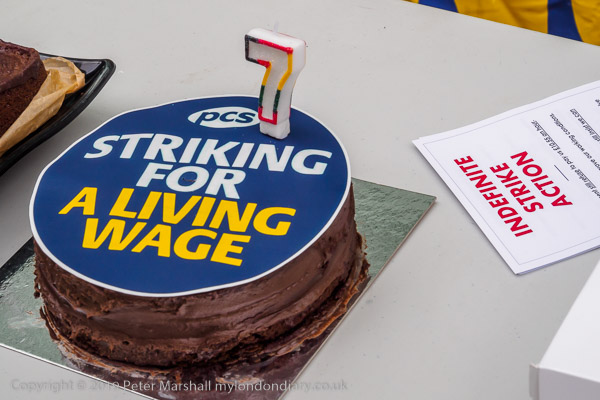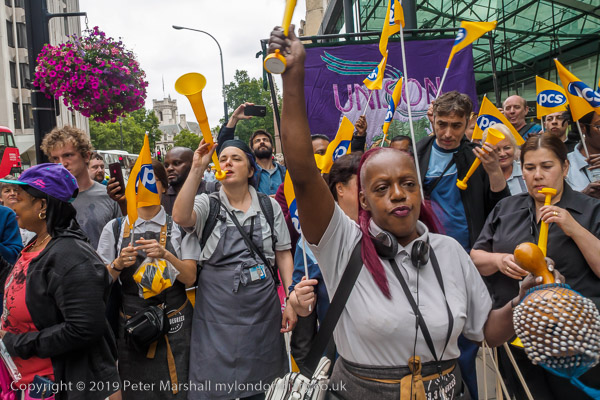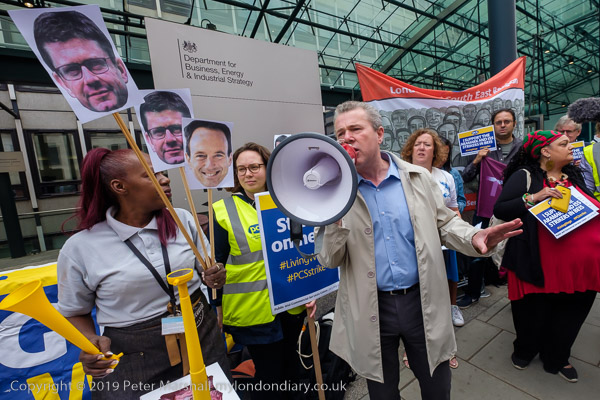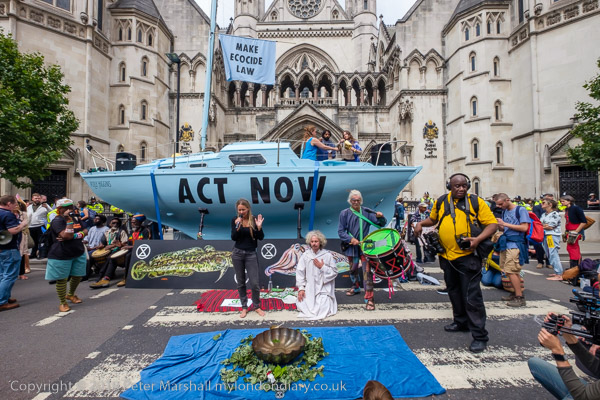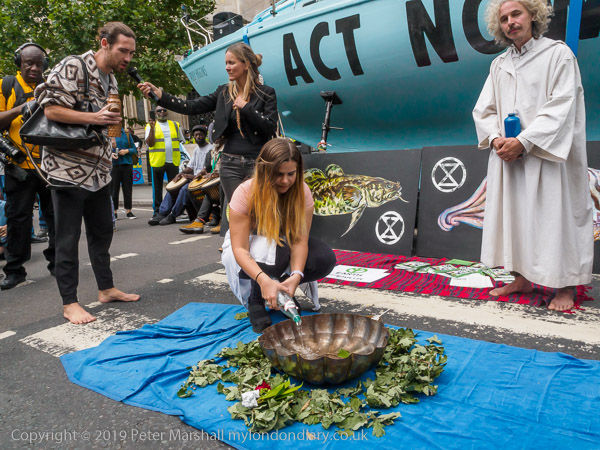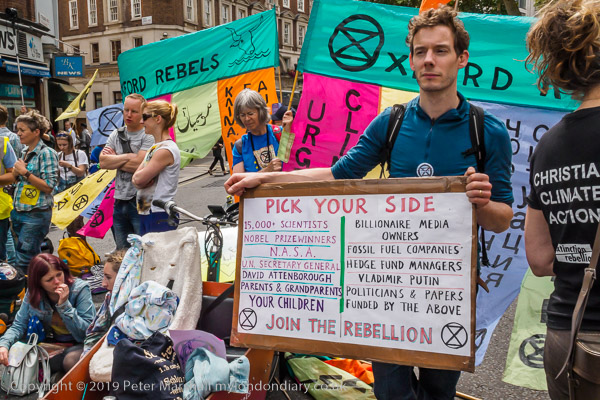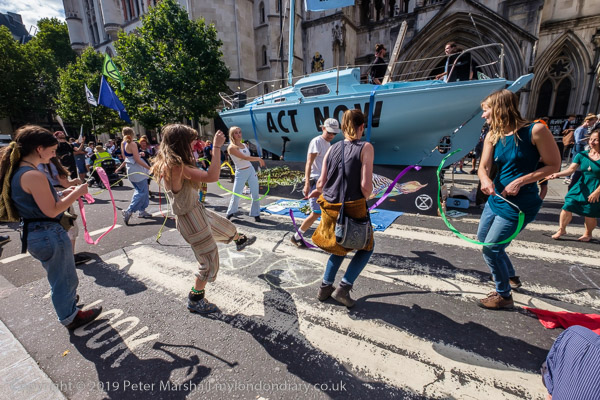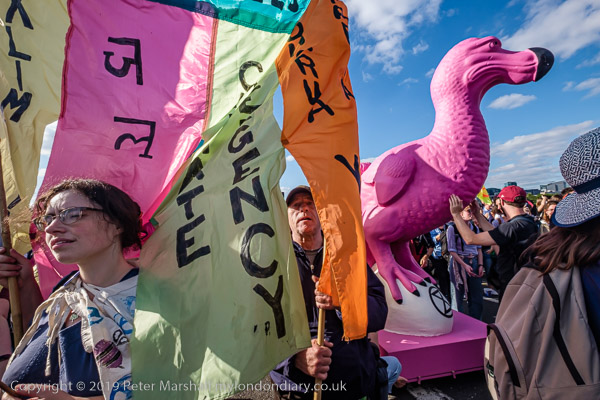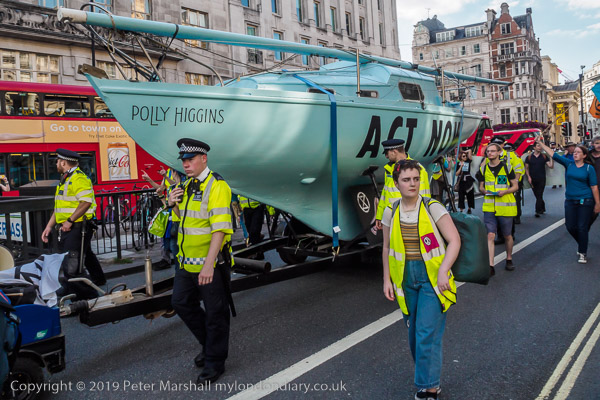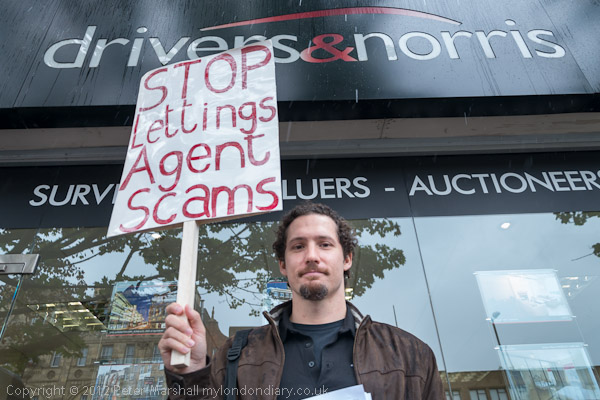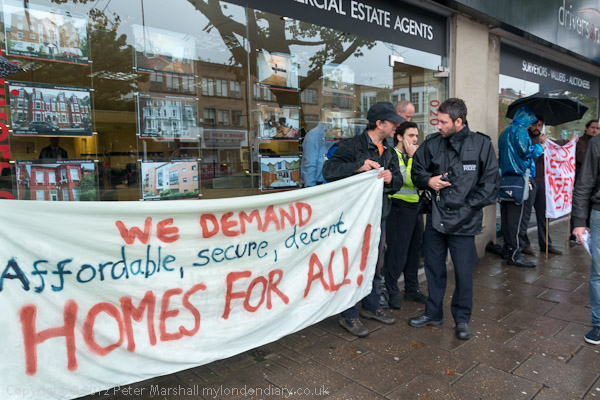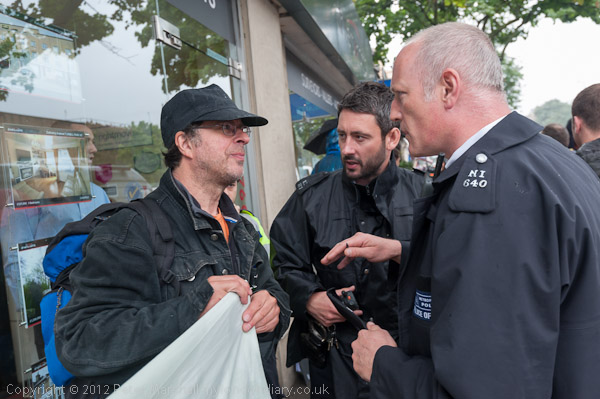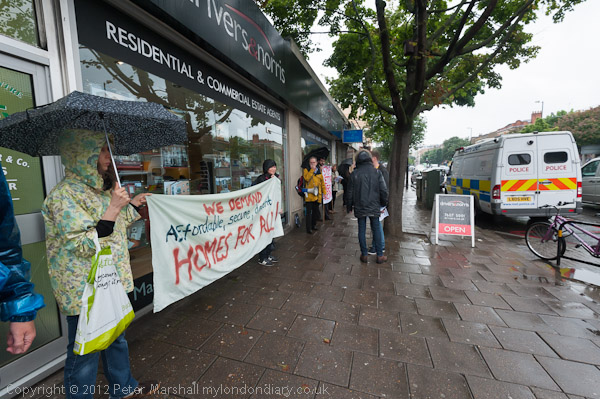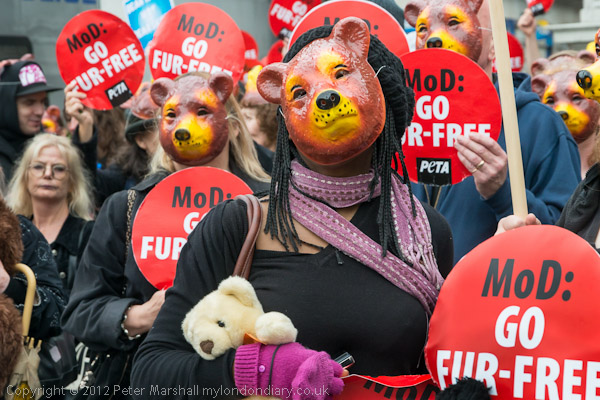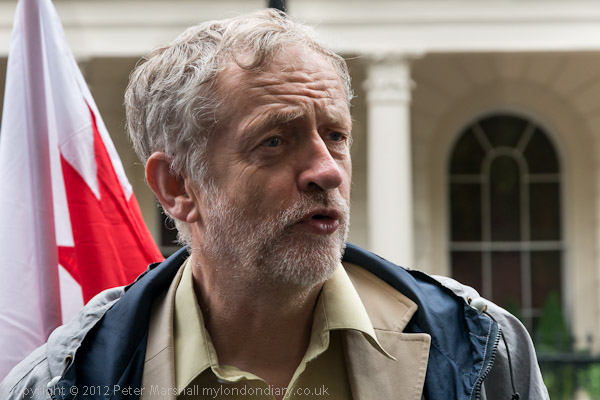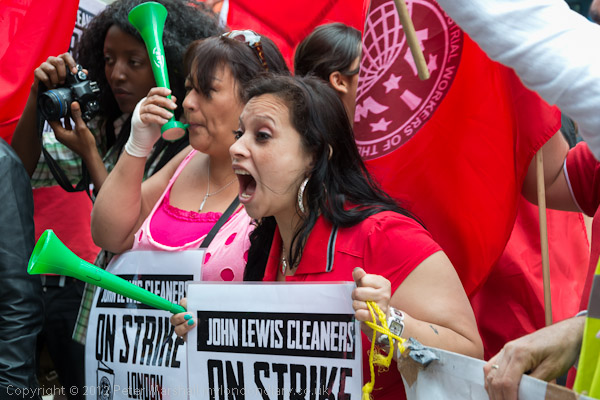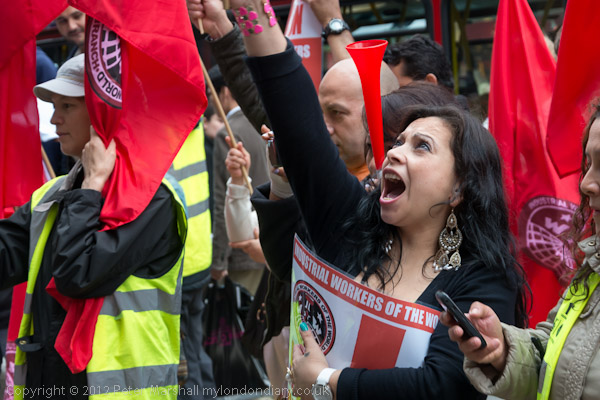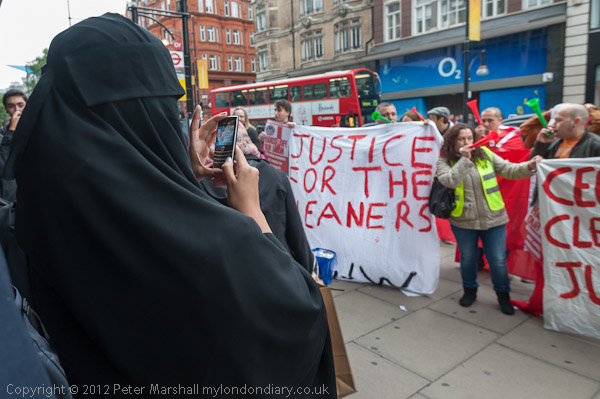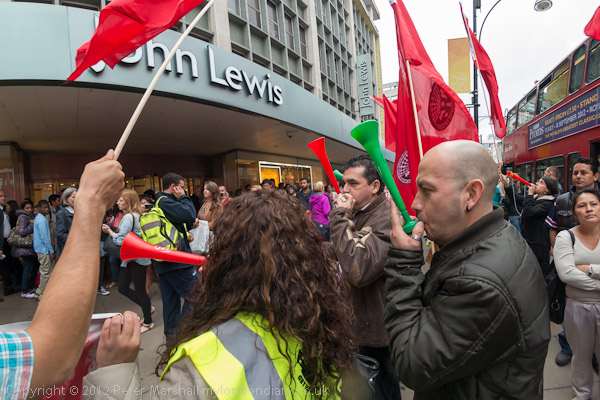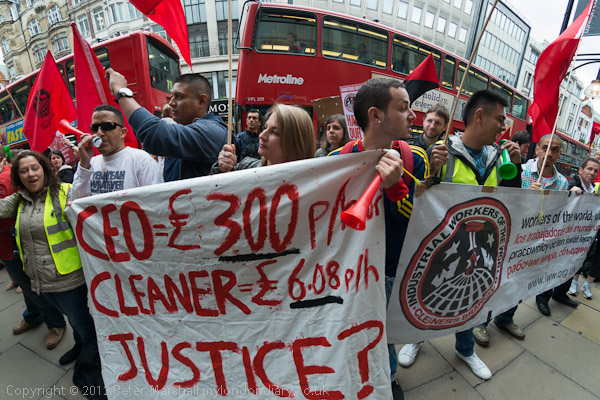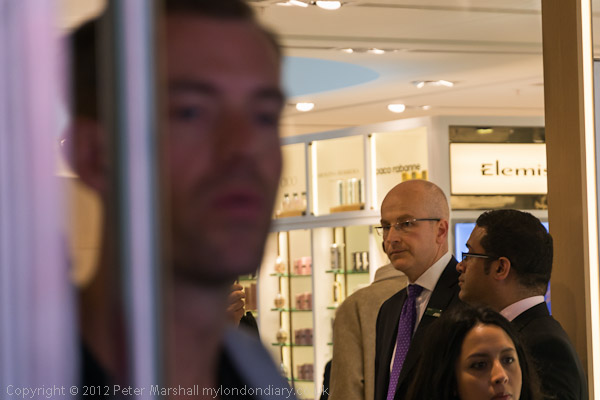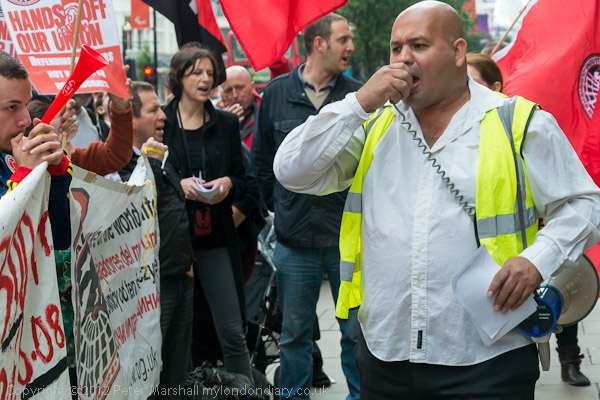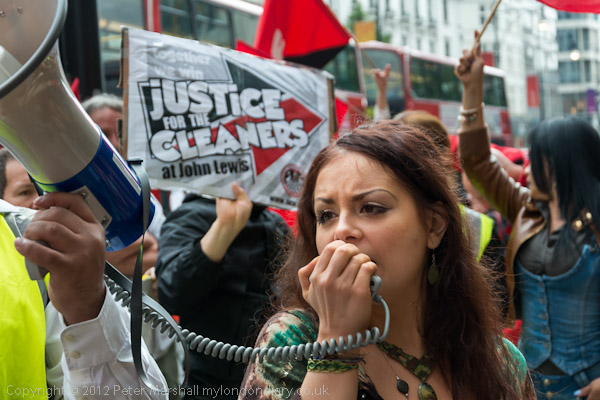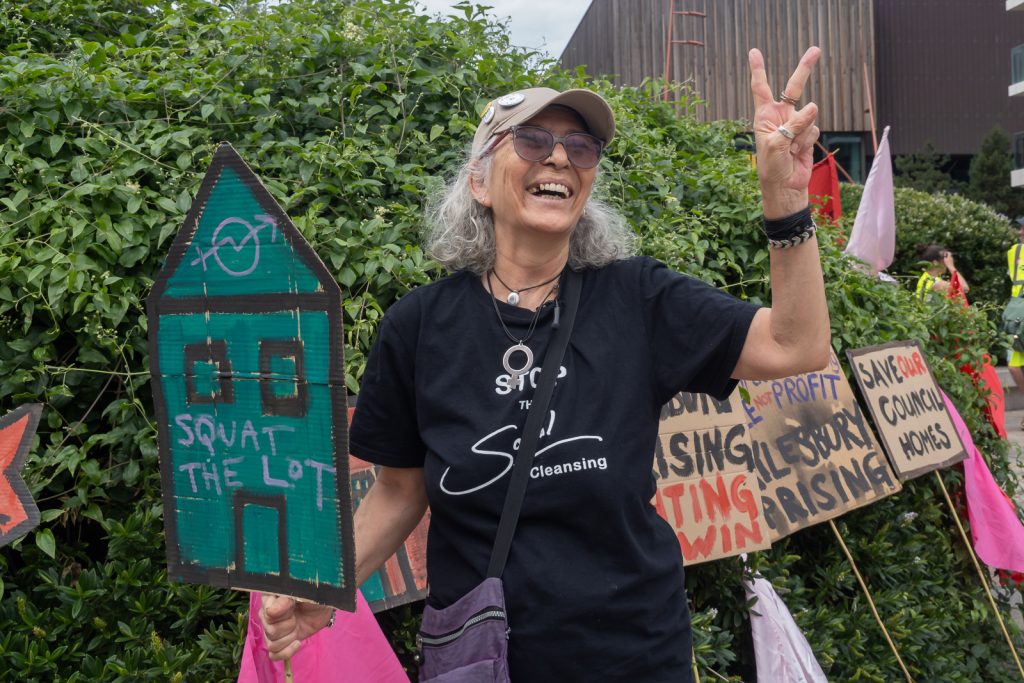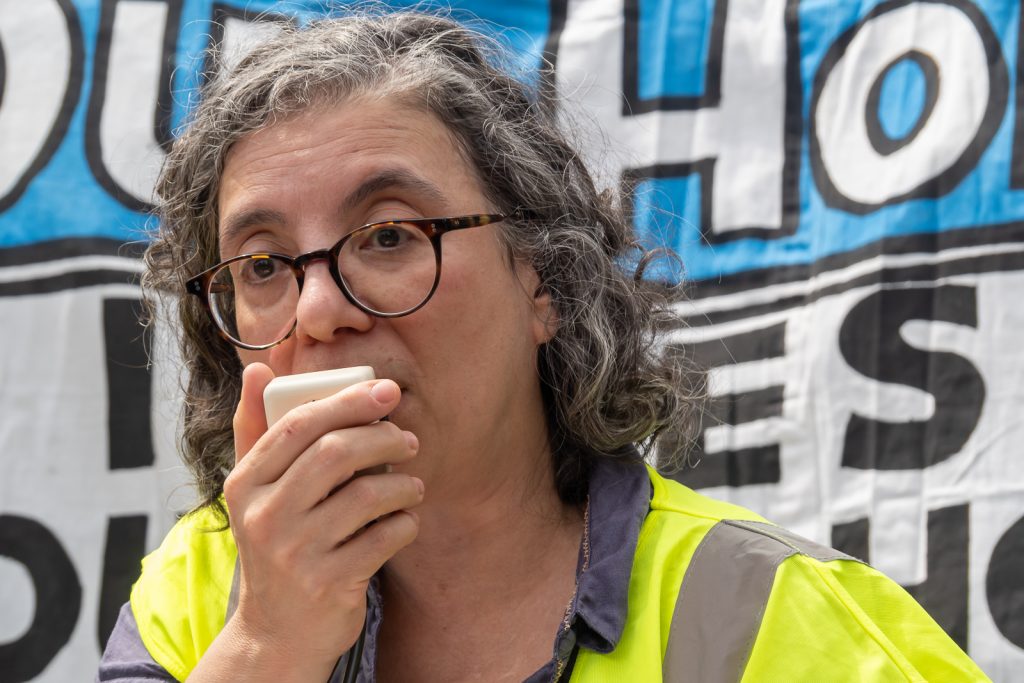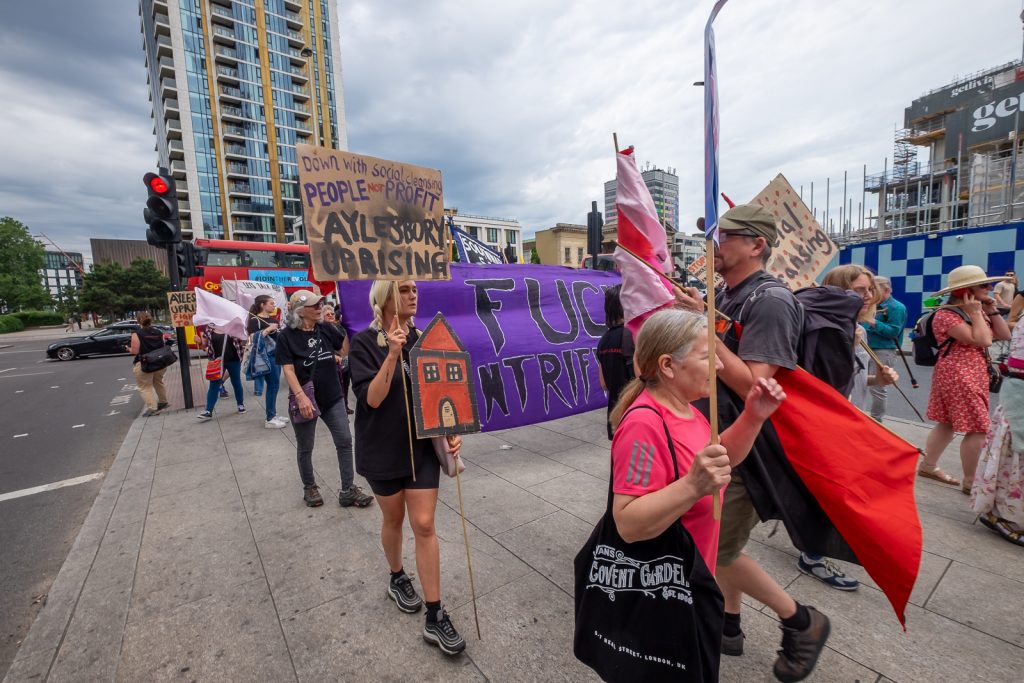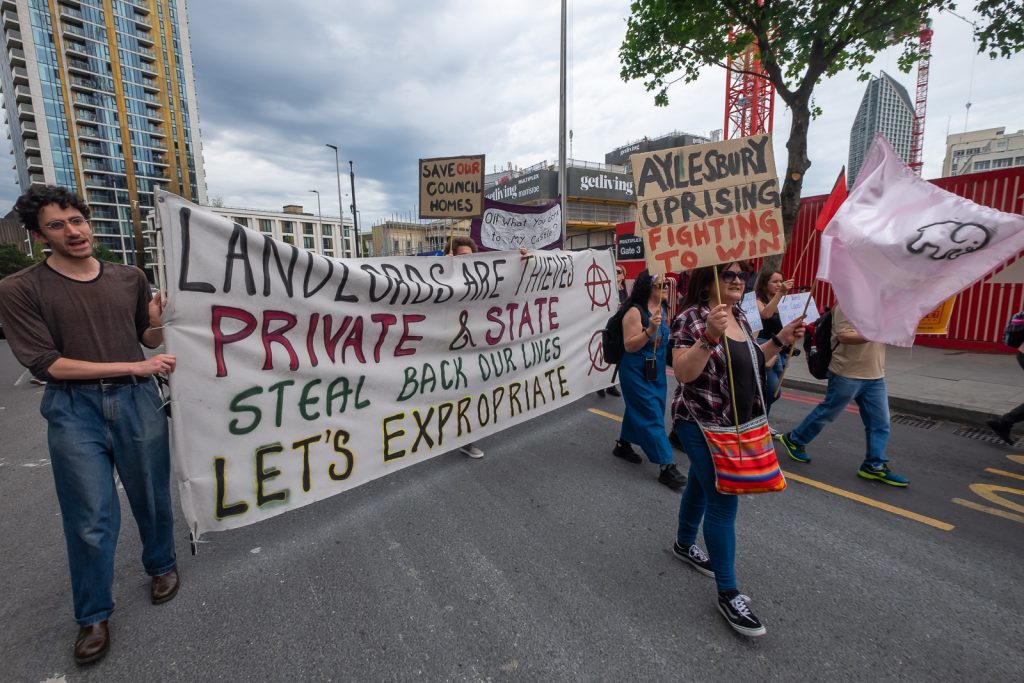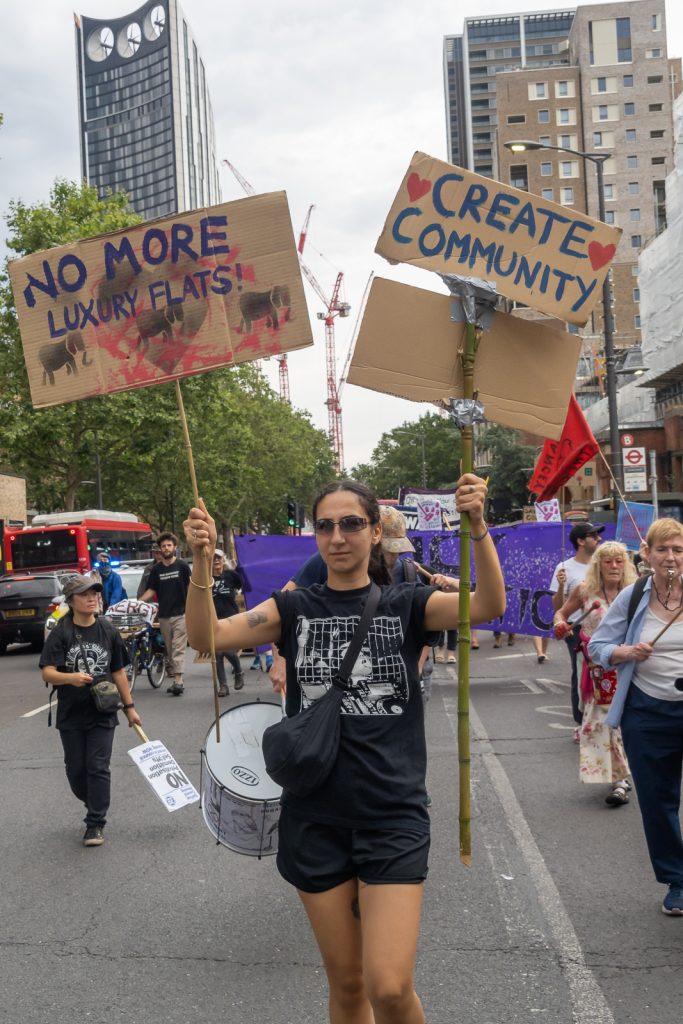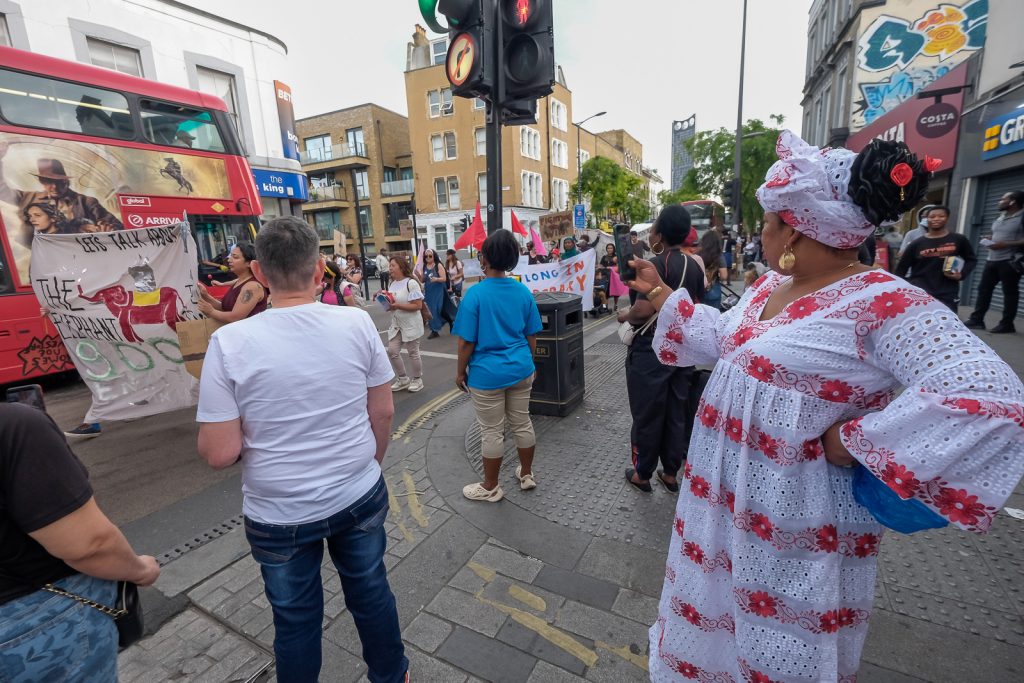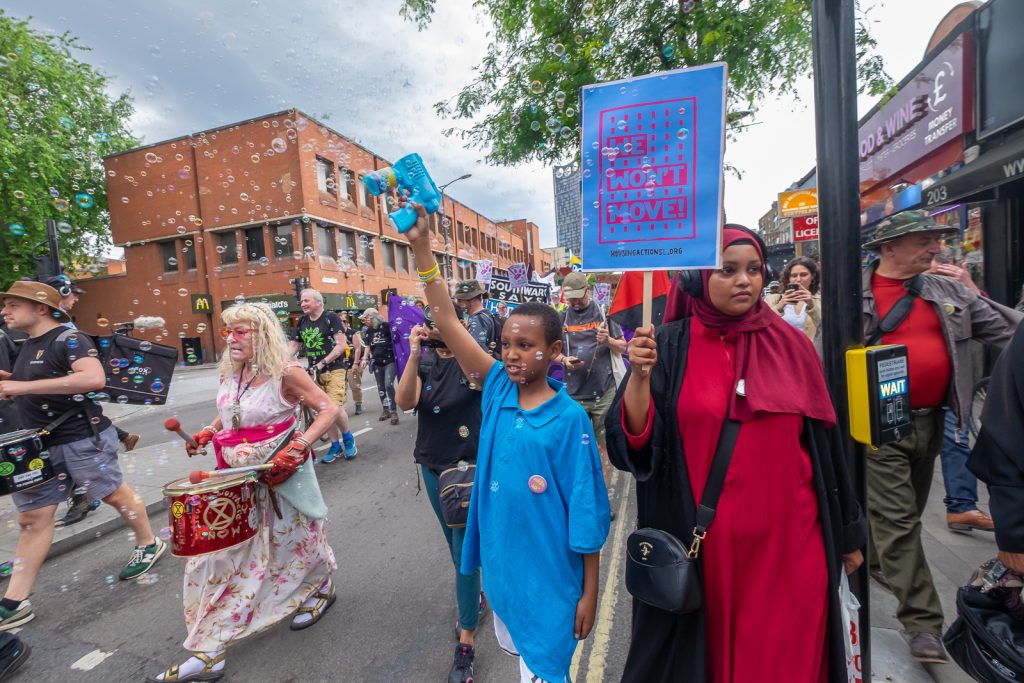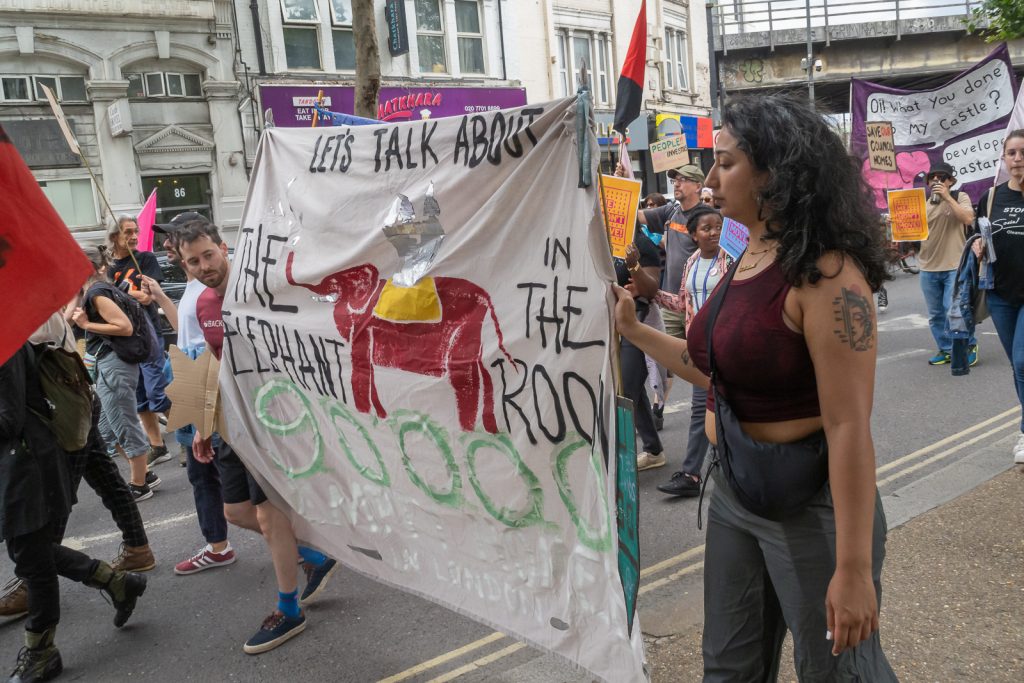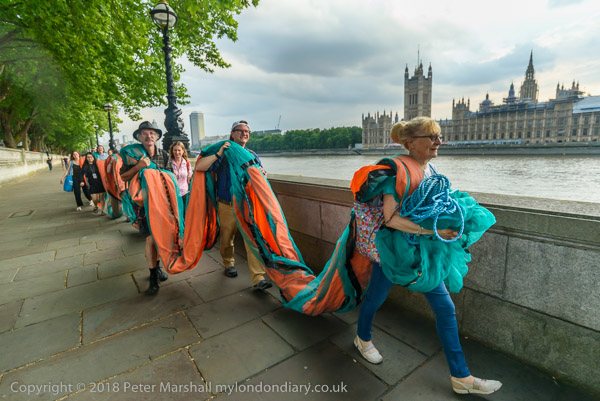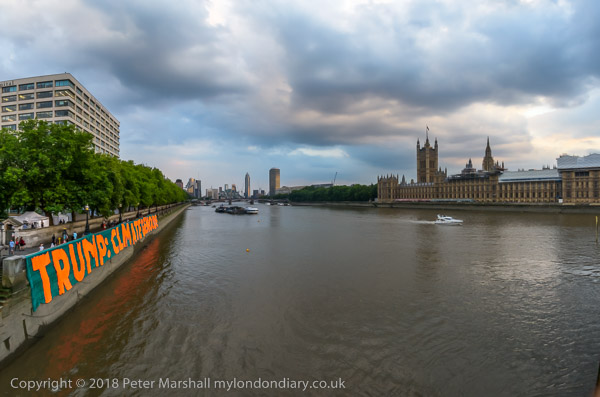Shut Down Yarl’s Wood 14: This protest on Saturday 21st July 2018 was the 14th organised by Movement for Justice outside the immigration prison at Yarl’s Wood and I think their last there. I missed the first so this was my 13th visit to this remote location, cyling uphill the five or six miles north from Bedford station. I had previously photographed a number of protests organised by MfJ outside the two immigration prisons (officially called detention centres to make it sound nicer) on the north of Heathrow airport, Harmondsworth and Colnbrook, a rather easier journey.
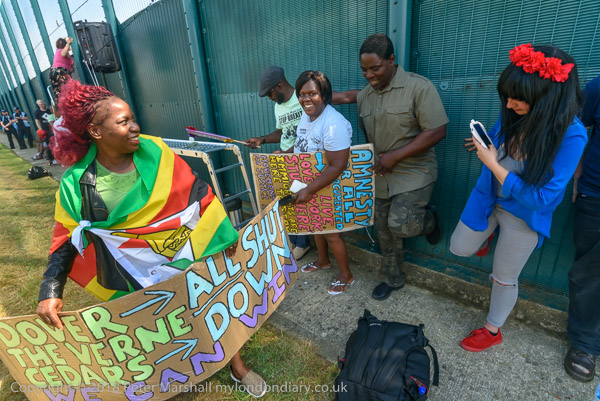
Unlike these two prisons which housed men, Yarl’s Wood was mainly used to hold women, though there were also a few families there. The protests there had attracted more campaigners because of this, with women being seen more widely as victims than male asylum seekers. And many of those who were locked up inside were women who had been raped as well as beaten and otherwise subjected to traumatic events before fleeing their countries.

Many of the women – as too the men elsewhere – were kept locked up for many months and some for years in indefinite detention while the Home Office refused to believe their stories or to properly investigate their cases, often demanding paperwork it would be impossible for them to provide. The remoteness of the centre and only limited access to internet and telephones makes it difficult for the women to progress their cases.
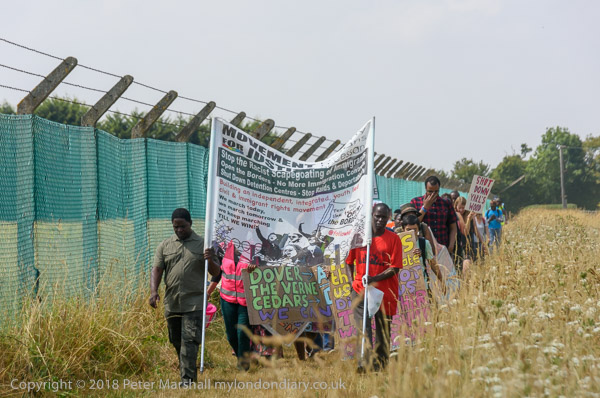
Many of these are people with desperate needs for counselling and help, but instead as various investigations, official as well as undercover journalism – had shown are held under appalling conditions in this and other centres run by private companies such as SERCO, with detainees refused their human and civil rights, assaulted, sexually harassed and assaulted, denied proper medical treatment, poorly fed and forced to work for £1 an hour on menial tasks.
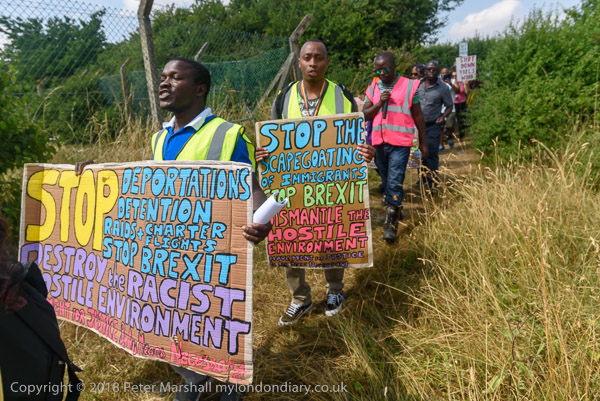
The protests here are greeted by the women, giving them the assurance that they have not been forgotten and that there are those outside who support them. Those able to get to the windows facing the hill on which the protesters stood so they could be seen over the tall prison fence – the lower 10ft solid steel and above that another ten foot of dense metal mesh – shouted greetings, waved and held up messages.
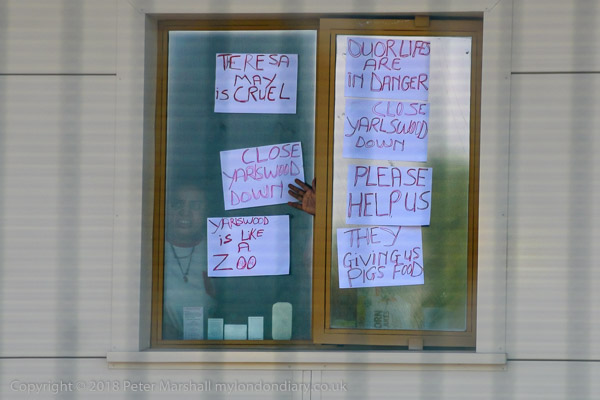
A powerful public address system meant those inside could hear the speeches, some by former inmates of Yarl’s Wood and other detention centres, and some by those inside, relayed by mobile phone to the amplifier, as well as by some leading MfJ members.

Most of those inside will eventually be released, the majority getting leave to stay in this country. Some are taken to be deported with the MfJ and other organisations then working desperately and often successfully to stop their deportation flights back to terror and violence in their home countries.
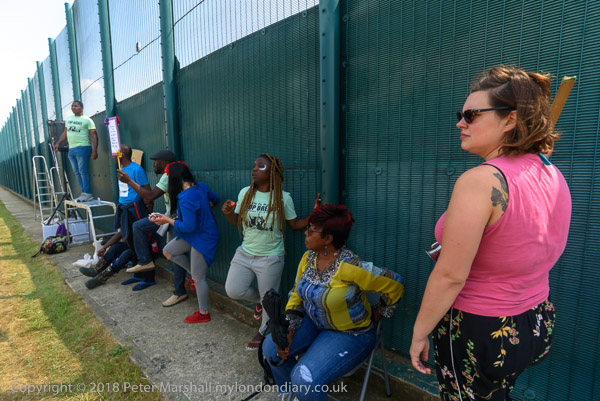
This was by far the smallest of all the protests at Yarl’s Wood organised by the MfJ, following complaints made against the organisation by a former member who appears to have been treated badly by them. But however justified her personal complaint, her comments revealed little or nothing about the nature of the group which was not already on Wikipedia or otherwise common knowledge. But the dispute led to many other groups ending their support for protests organised by the MfJ, some organising their own protests but with very limited success.
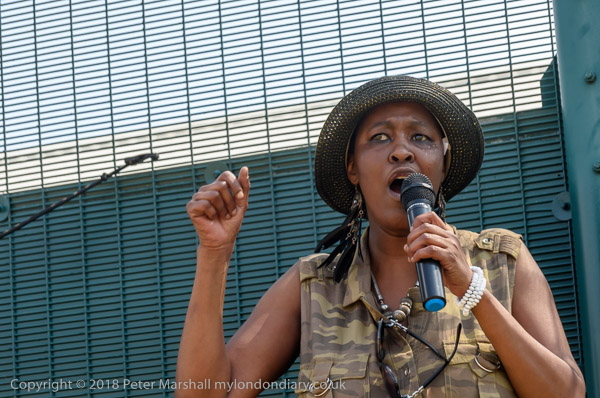
Other groups were and are working – as MfJ still is – to support detainees. The MfJ has played a major role in protests against our racist immigration detention system and in actions to prevent deportations. It still seems to be supported by many former detainees who have always played a leading role in the protests both at Yarl’s Wood and at Harmondsworth.
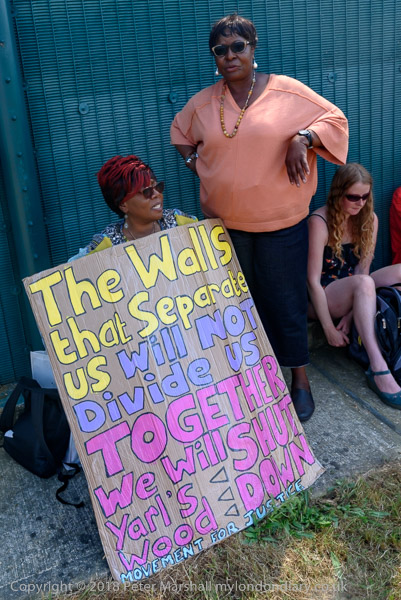
The Home Office finally decided it was too easy for protests to be organised outside Yarl’s Wood and moved the women – many of whom were released at the start of the Covid epidemic – up to an even more remote location in the north-east, with Yarl’s Wood being used to house those who had crossed the Channel in small boats.
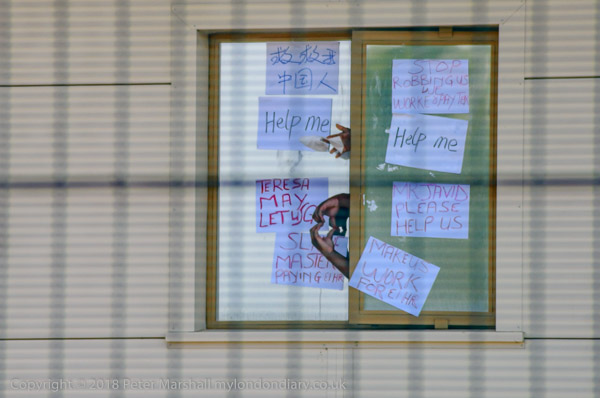
The Illegal Immigration Act finally passed a few days ago intends to deport almost all migrants and asylum seekers (other than those coming under special schemes for Ukraine, Hong Kong etc) to Rwanda without any consideration of their asylum claims. Efforts to persuade the government to set up safe routes for those claiming asylum were rejected by the government in the latest ratcheting up of its racist policies, justified by them through the doublespeak of “compassion” while showing not the faintest scintilla of any real compassion.
More on My London Diary at Shut Down Yarl’s Wood 14.
